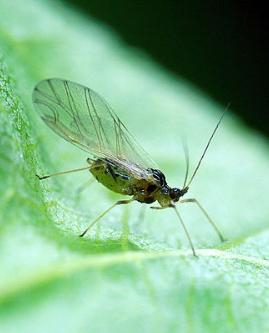Deciphering the mechanisms underlying insecticide resistance is key to devising appropriate strategies against this economically important trait. Myzus persicae, the green peach-potato aphid, is a major pest that has evolved resistance to many insecticide classes, including neonicotinoids. M. persicae resistance to neonicotinoids has previously been shown to result from two main mechanisms: metabolic resistance resulting from P450 overexpression and a targetsite mutation, R81T.
By combining extensive insecticide bioassays with and without addition of the synergist PBO, and gene copy number and expression quantification of two key P450 enzymes (CYP6CY3 and CYP6CY4) in a 23 clone collection, researchers, (i) confirmed that metabolic resistance is correlated with P450 expression level, up to a threshold, (ii) demonstrated that the R81T mutation, in the homozygous state and in combination with P450 overexpression, leads to high levels of resistance to neonicotinoids, and, (iii) showed that there is a synergistic interaction between the P450 and R81T mechanisms, and that this interaction has the strongest impact on the strength of resistance phenotypes. However, even though the R81T mutation has a great effect on the resistance phenotype, different R81T genotypes can exhibit variation in the level of resistance, explained only partially by P450 overexpression.
Reference: Mottet, C., Caddoux, L., Fontaine, S., Plantamp, C., Bass, C. and Barrès, B. (2024), Myzus persicae resistance to neonicotinoids—unravelling the contribution of different mechanisms to phenotype. Pest Manag Sci. https://doi.org/10.1002/ps.8316

